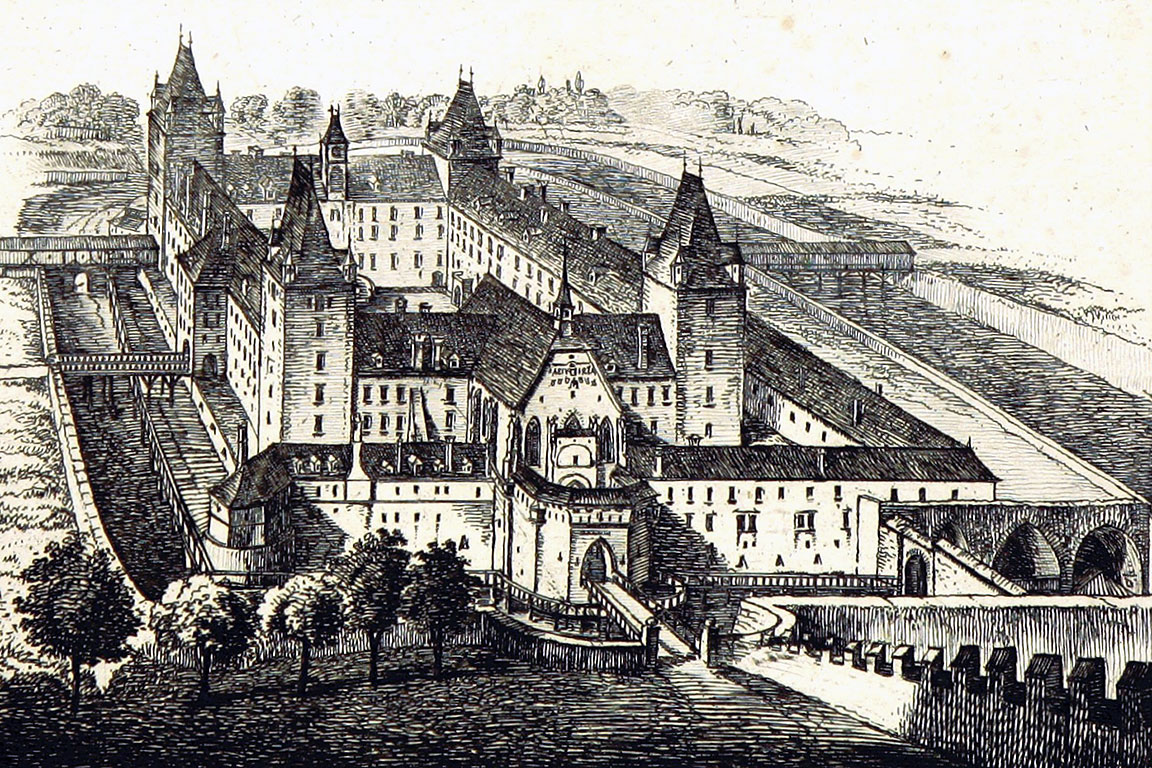With its more than 800 years of history, the castle of Wiener Neustadt bears witness to many historical events in the history of Austria. It was once the seat of emperors and kings. It houses the grave of Emperor Maximilian I. Since 1752, the castle has been home to the oldest military academy in the world.
Establishment of the town and construction of the first castle
The town "Wiener Neustadt" was established in 1194 by the Babenberg Duke Leopold V. Until 1192, the area belonged to the Duchy of Styria. After the dynasty of the Otakars became extinct with the death of his son Ottokar IV, the Duchy of Styria passed to the Austrian House of Babenberg.
The construction of a new, fortified town was necessary because the previous border fortress against Hungary, Pitten, had already fallen into disrepair and no longer offered sufficient protection against the constant incursions of the Hungarians. The new town was named "Wiener Neustadt" - meaning more or less New Vienna ("Viennese Newtown").
The construction was financed with the ransom paid for the English king Richard the Lionheart, whom Leopold V. had previously captured and held as a hostage at Dürnstein Castle.
The southeast corner of the town was chosen as the location of the castle because it was closest to the natural border formed by the Leitha-river and because the terrain was swampy and therefore easy to defend. Because of the swamp, the castle had to be built on piles.
Construction of the present castle
The construction of today's castle was then begun in 1379 by the Habsburg Duke Leopold III the Modest. The castle was built larger and more massive than the old Babenberg castle. However, the most significant construction work took place in the years 1440-1487 under Emperor Frederick III, who resided in the castle for many years. The St. George's Cathedral and the coat of arms wall were also built during this period. The castle essentially looked the same as it does today, but had four corner towers. In 1529, the castle was severely damaged during the Turkish siege. Fires ravaged the castle in 1608 and 1616.
Castle before the 1768 earthquake
On December 14, 1751, the castle was given its current purpose. Empress Maria Theresia chose the castle as accommodation for the military academy she had founded. The academy was intended for 200 officer cadets, of which 100 were noblemen and 100 were sons of deserving officers. After adaptation work, the first 191 pupils were able to move into the new training facility on November 1, 1752. In 1768, the castle was severely damaged by an earthquake. It was then rebuilt according to the plans of the master builder Nicolaus Pacassi.
Demolition during the second world war
The condition of the castle remained practically unchanged from 1777 to 1945. Only insignificant adaptations, additions, alterations and improvements were made.
During World War II, strategic targets in Wiener Neustadt, including the railway junction and the marshalling yards, the Wiener Neustädter Flugzeugwerke factory - largest production site for the Messerschmitt Bf 109 fighter aircraft - and the Raxwerke - one of the production sites for the V-2 rocket -, were repeatedly bombed. Bombing operations left only 18 of 4,000 buildings undamaged.
Also the castle was hit and demolished by several bombs. At the beginning of April 1945, the castle was set on fire and burned almost completely - what remained was a ruin.
Reconstruction
During the reconstruction between 1946 and 1959, the historical form was restored. As far as possible, the old walls were left in place, and the interior layout was of course adapted to the modern conditions by adding partition walls and ceilings, as well as the interior decoration.

![[Translate to English:] Zerstörte Burg im Jahr 1945](/fileadmin/milak/Besucher/2018/Fotos/Burg/MilAk_1945_01.jpg)
![[Translate to English:] Wiederaufbau nach dem Krieg](/fileadmin/milak/Besucher/2018/Fotos/Burg/MilAk_1945_02.jpg)